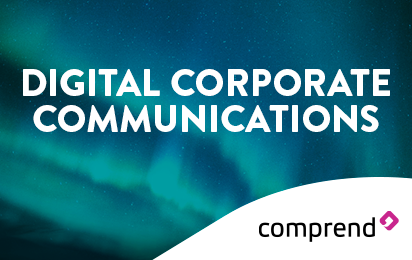
FIVE MINUTES WITH LIANA DINGHILE
Merging brands is a process that requires changing the point of view and inviting customers into a new initiative. It is important for the process of a merger or acquisition to be done sensibly and methodically, while utilising the company’s marketing and brand management capabilities. Liana Dinghile, group director of strategy at Siegel+Gale, talks about success, challenges and communications within an M&A framework.
Siegel+Gale has been involved in many projects including mergers and acquisitions. What is the recipe for success?
I think M&A bring opportunities by design, whether by adding value to the bottom line of the business or by stretching the business into new areas and new capabilities. What they also bring is complexity on all levels. There are complexities on the operational side, on the financial side, on the cultural side and therefore simplicity is critical as that happens. Also, clarity is a major priority that helps with bringing focus and knowing how to prioritise and create a plan that will get us from a to b to z in the right way.
Lastly, it is about the balance of logic and magic. A lot of things are very logical, like brand architecture and how businesses need to reorganise themselves or bring order to a merger and acquisition process. But it’s also about the magic that can come from that. Clarity, simplicity and focus is what I would say is the recipe for success.
Can brand and design be used to bring clarity to the M&A process? Can branding help consolidate reputation or safeguard a brand following M&A?
The short answer to that is yes. Change is difficult and this is where clarity upfront and aligning objective can play a role. It all starts from the leadership of the business, from people coming together, making sure the sort of vision and the objectives they are trying to achieve are the same. This sets the tone and also the direction for everybody else. This is about going beyond the financial side of the deal, it is about keeping an eye on the reasons why we’re doing this, the purpose of the merger and acquisition. We work with facts, as opposed to working with beliefs and assumptions about what should stay, what should go and what should change. We always look to create a strong fact base as we are working in M&A situations. For both customers and employees, knowing where they stand, communicating with them and bringing them along on the journey of change is extremely important.
What part do communications play in a merger? Why is effective communication so important in times of change?
In times of change, and specifically in M&A situations, a lot of assumptions are made and a lot of anxiety exists. People start to question ‘what does that mean for me’ and unanswered questions create uncertainty. You often see a percentage of the workforce leaving directly after announcements are made about M&A, which reflects that people need to fill in the gap regarding what’s happening. Branding is a powerful vehicle to do that because it’s the one thing that binds everybody together, it represents the identity of the company and its story. From a customer point of view, I think it’s really important to keep them informed and help them understand what new opportunities can come from it. Communication is about managing change, but it is also about presenting the opportunity of change.
What’s the biggest challenge when branding following a merger or acquisition?
The biggest challenge is making a clear plan and getting ahead. The hard work begins once the deal is done, so being able to plan the roadmap and merge the businesses and the cultures is a big challenge. The cultural aspect is particularly important, as this is where most of the challenges come from. Another challenge is the tendency to overpromise. Take the word synergy as an example, which is used a lot in these situations. Often, because of companies overusing this word, it can be assumed that synergy means store closures. It has become associated with bad things as opposed to positive things.
How have your clients’ needs evolved in terms of branding engagements in the past five years?
Clients recognise the need for simplicity. That part hasn’t. However, I think the emphasis on experience has definitely changed over the last years. Businesses want to know more about their audiences so they can serve them better, they want to create new opportunities to engage their customers. Regarding their employees, they want to drive more efficiency, make their businesses more successful and discover how they can sustain success. It’s no longer enough to just tell people what your brand is all about and what you want to mean to them. The proof is always in the delivery. Experience and engagement are the two things that we have seen increase over the years regarding our clients’ needs.
For more from Communicate magazine, follow us on Twitter @Communicatemag
For more about Liana Dinghile go to http://www.siegelgale.com/people/liana-dinghile/


